BMP3002: Business in Practice - Internal and External Factors Analysis
VerifiedAdded on 2022/12/09
|7
|962
|409
Report
AI Summary
This report provides a comprehensive analysis of Unilever, a leading multinational consumer goods company. It begins with an introduction to Unilever and its diverse product portfolio. The core of the report focuses on examining both internal and external factors influencing the company's operations. The internal analysis utilizes the SWOT framework to assess Unilever's strengths, weaknesses, opportunities, and threats. The external analysis employs the PESTLE framework to evaluate the political, economic, social, technological, legal, and environmental factors impacting the company. The report also discusses the ways in which Unilever impacts its external environment, highlighting its influence on various sectors. The conclusion summarizes the key findings and emphasizes the importance of understanding the interplay between internal and external factors for effective business strategy and environmental impact. The report also includes references to relevant academic sources.
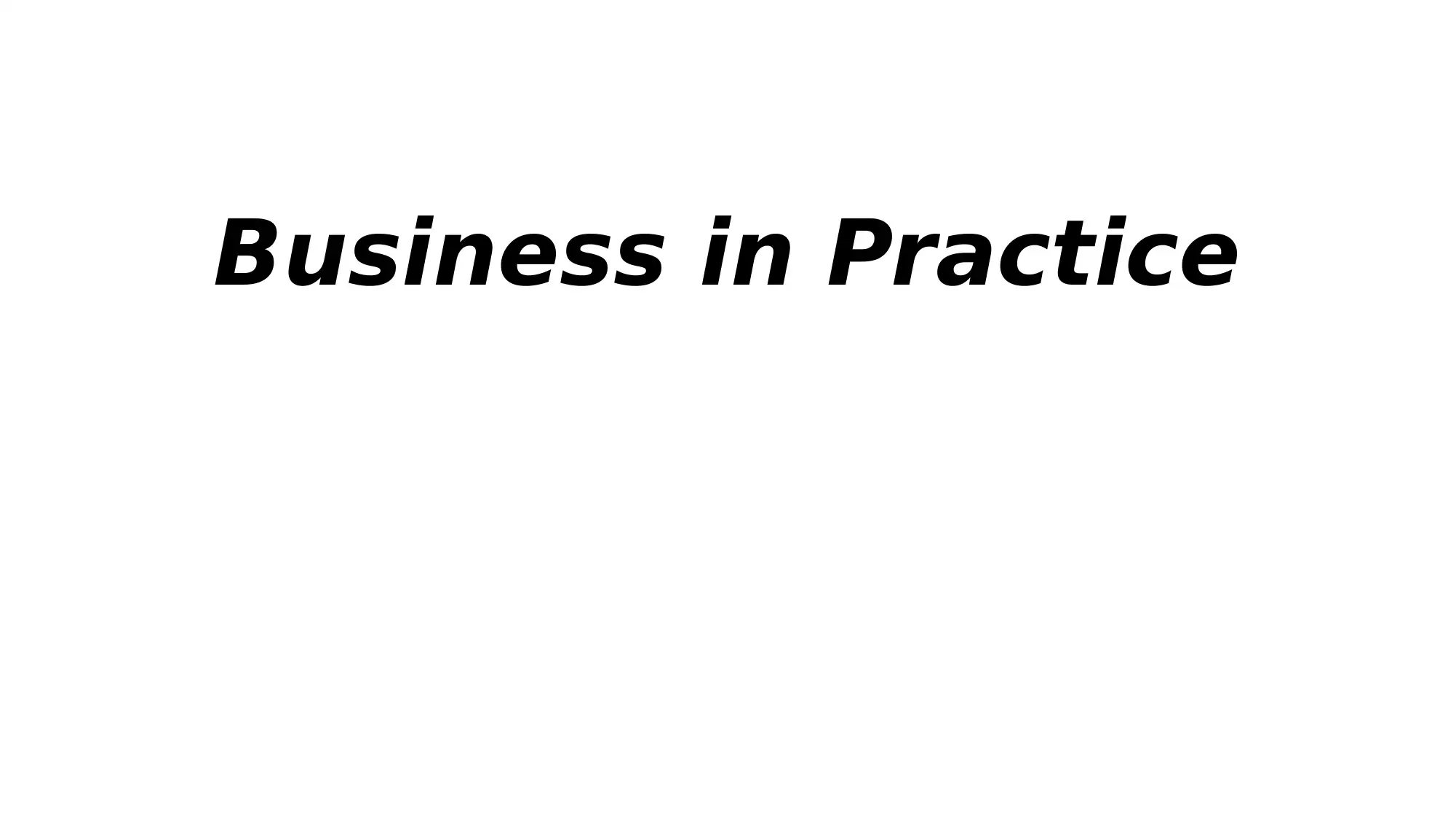
Business in Practice
Paraphrase This Document
Need a fresh take? Get an instant paraphrase of this document with our AI Paraphraser

INTRODUCTION
• Unilever is one of the leading Multinational Consumer goods
company which is based in UK in 1929. It deals with the products such
as food, confections, energy drink, baby food, soft drinks, cheese, ice
cream and many more. Therefore, the following discussion is made on
the internal and external factors which affect the company and the
ways in which a business can impact on the external environment
with proper findings and conclusion (Wu, Wang and Wu, 2020).
• Unilever is one of the leading Multinational Consumer goods
company which is based in UK in 1929. It deals with the products such
as food, confections, energy drink, baby food, soft drinks, cheese, ice
cream and many more. Therefore, the following discussion is made on
the internal and external factors which affect the company and the
ways in which a business can impact on the external environment
with proper findings and conclusion (Wu, Wang and Wu, 2020).
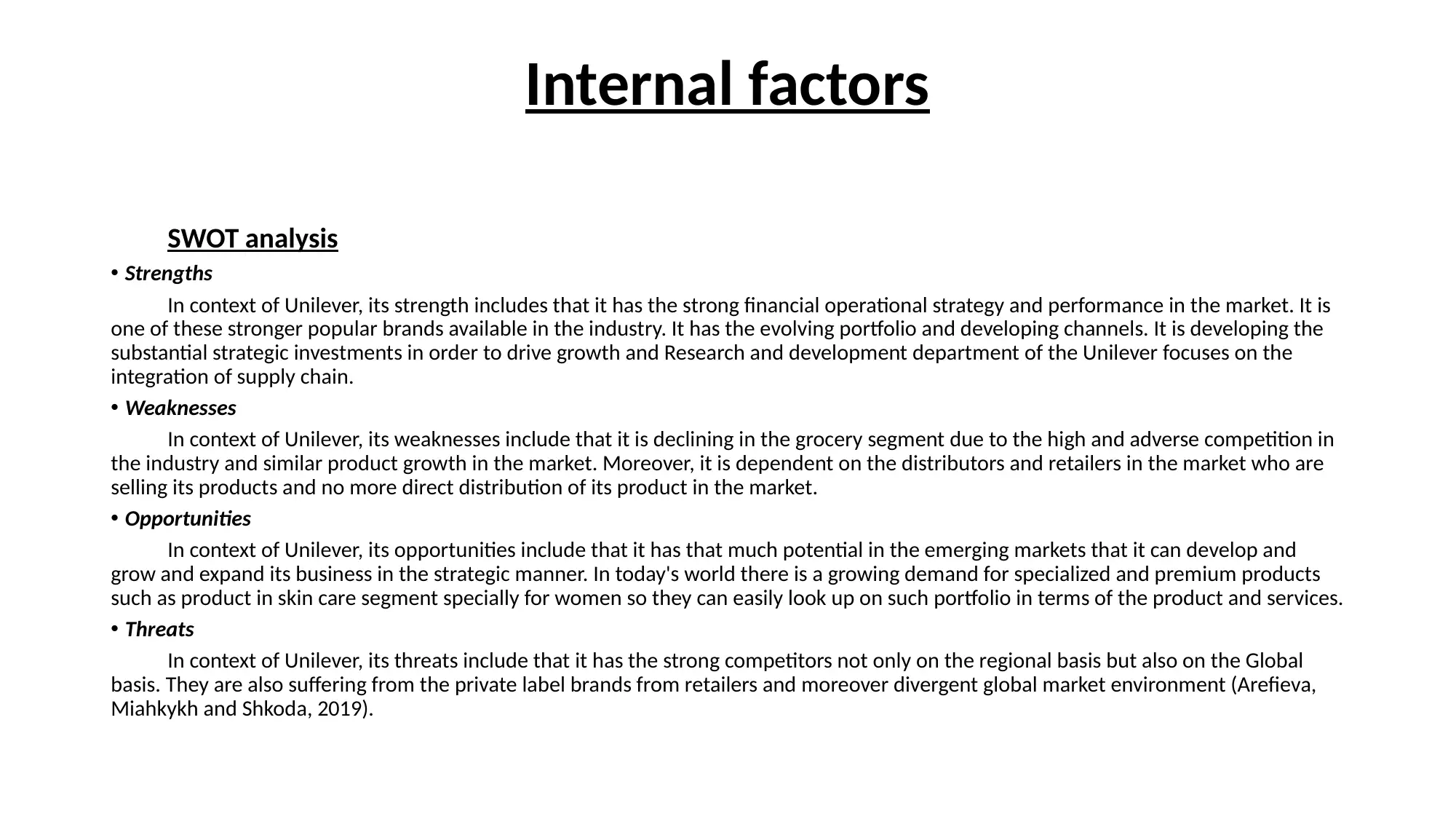
Internal factors
SWOT analysis
• Strengths
In context of Unilever, its strength includes that it has the strong financial operational strategy and performance in the market. It is
one of these stronger popular brands available in the industry. It has the evolving portfolio and developing channels. It is developing the
substantial strategic investments in order to drive growth and Research and development department of the Unilever focuses on the
integration of supply chain.
• Weaknesses
In context of Unilever, its weaknesses include that it is declining in the grocery segment due to the high and adverse competition in
the industry and similar product growth in the market. Moreover, it is dependent on the distributors and retailers in the market who are
selling its products and no more direct distribution of its product in the market.
• Opportunities
In context of Unilever, its opportunities include that it has that much potential in the emerging markets that it can develop and
grow and expand its business in the strategic manner. In today's world there is a growing demand for specialized and premium products
such as product in skin care segment specially for women so they can easily look up on such portfolio in terms of the product and services.
• Threats
In context of Unilever, its threats include that it has the strong competitors not only on the regional basis but also on the Global
basis. They are also suffering from the private label brands from retailers and moreover divergent global market environment (Arefieva,
Miahkykh and Shkoda, 2019).
SWOT analysis
• Strengths
In context of Unilever, its strength includes that it has the strong financial operational strategy and performance in the market. It is
one of these stronger popular brands available in the industry. It has the evolving portfolio and developing channels. It is developing the
substantial strategic investments in order to drive growth and Research and development department of the Unilever focuses on the
integration of supply chain.
• Weaknesses
In context of Unilever, its weaknesses include that it is declining in the grocery segment due to the high and adverse competition in
the industry and similar product growth in the market. Moreover, it is dependent on the distributors and retailers in the market who are
selling its products and no more direct distribution of its product in the market.
• Opportunities
In context of Unilever, its opportunities include that it has that much potential in the emerging markets that it can develop and
grow and expand its business in the strategic manner. In today's world there is a growing demand for specialized and premium products
such as product in skin care segment specially for women so they can easily look up on such portfolio in terms of the product and services.
• Threats
In context of Unilever, its threats include that it has the strong competitors not only on the regional basis but also on the Global
basis. They are also suffering from the private label brands from retailers and moreover divergent global market environment (Arefieva,
Miahkykh and Shkoda, 2019).
⊘ This is a preview!⊘
Do you want full access?
Subscribe today to unlock all pages.

Trusted by 1+ million students worldwide
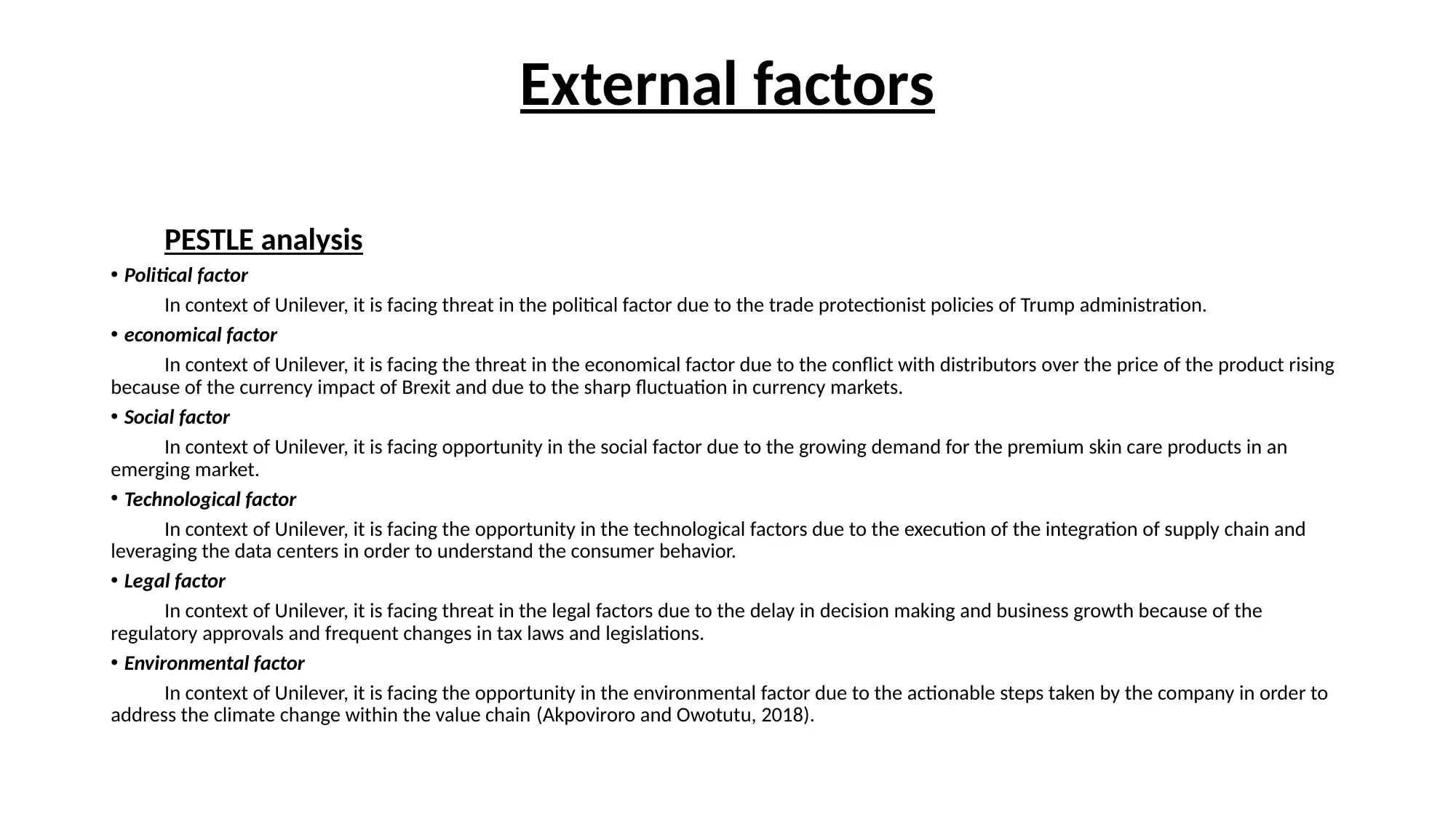
External factors
PESTLE analysis
• Political factor
In context of Unilever, it is facing threat in the political factor due to the trade protectionist policies of Trump administration.
• economical factor
In context of Unilever, it is facing the threat in the economical factor due to the conflict with distributors over the price of the product rising
because of the currency impact of Brexit and due to the sharp fluctuation in currency markets.
• Social factor
In context of Unilever, it is facing opportunity in the social factor due to the growing demand for the premium skin care products in an
emerging market.
• Technological factor
In context of Unilever, it is facing the opportunity in the technological factors due to the execution of the integration of supply chain and
leveraging the data centers in order to understand the consumer behavior.
• Legal factor
In context of Unilever, it is facing threat in the legal factors due to the delay in decision making and business growth because of the
regulatory approvals and frequent changes in tax laws and legislations.
• Environmental factor
In context of Unilever, it is facing the opportunity in the environmental factor due to the actionable steps taken by the company in order to
address the climate change within the value chain (Akpoviroro and Owotutu, 2018).
PESTLE analysis
• Political factor
In context of Unilever, it is facing threat in the political factor due to the trade protectionist policies of Trump administration.
• economical factor
In context of Unilever, it is facing the threat in the economical factor due to the conflict with distributors over the price of the product rising
because of the currency impact of Brexit and due to the sharp fluctuation in currency markets.
• Social factor
In context of Unilever, it is facing opportunity in the social factor due to the growing demand for the premium skin care products in an
emerging market.
• Technological factor
In context of Unilever, it is facing the opportunity in the technological factors due to the execution of the integration of supply chain and
leveraging the data centers in order to understand the consumer behavior.
• Legal factor
In context of Unilever, it is facing threat in the legal factors due to the delay in decision making and business growth because of the
regulatory approvals and frequent changes in tax laws and legislations.
• Environmental factor
In context of Unilever, it is facing the opportunity in the environmental factor due to the actionable steps taken by the company in order to
address the climate change within the value chain (Akpoviroro and Owotutu, 2018).
Paraphrase This Document
Need a fresh take? Get an instant paraphrase of this document with our AI Paraphraser
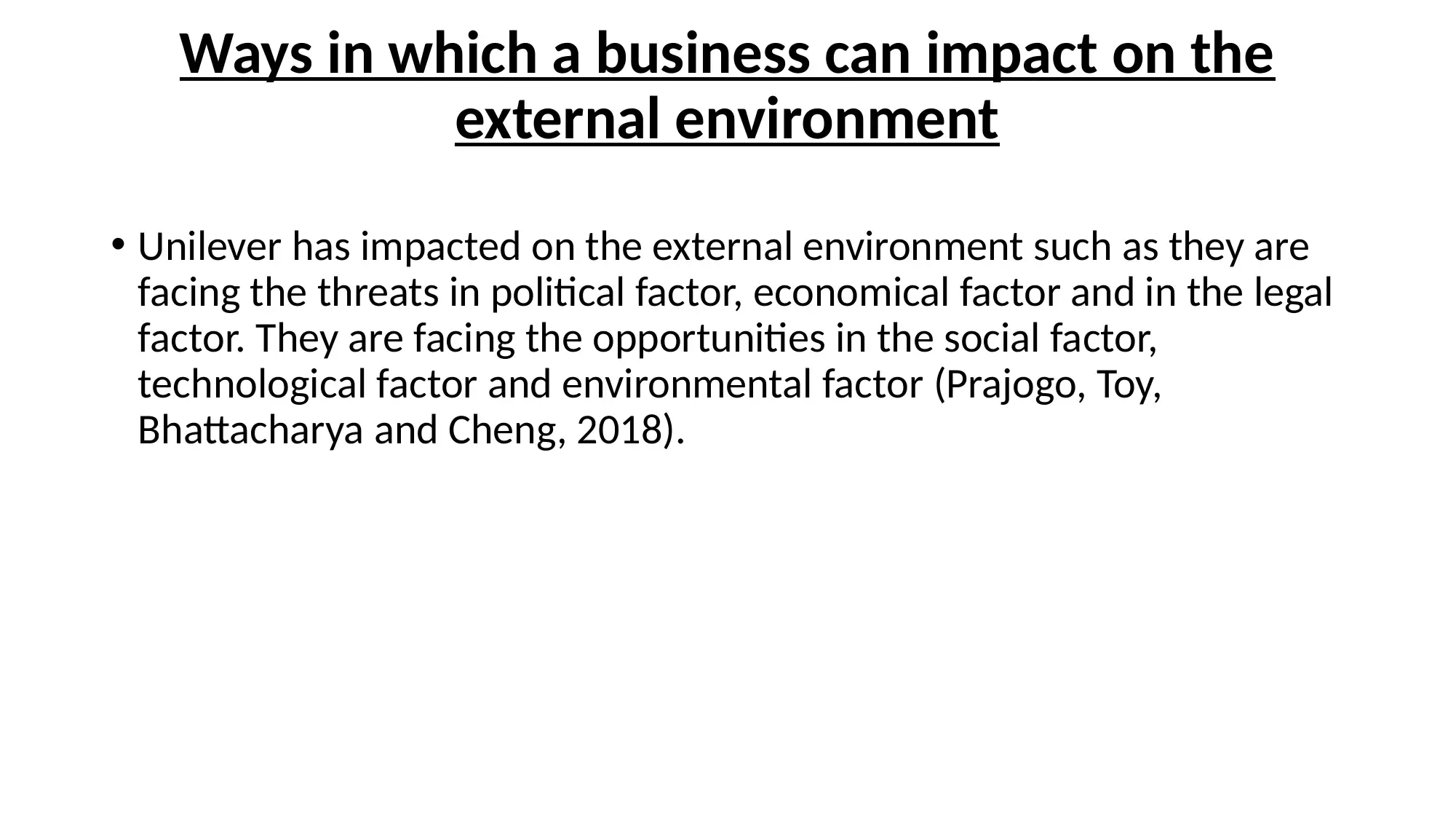
Ways in which a business can impact on the
external environment
• Unilever has impacted on the external environment such as they are
facing the threats in political factor, economical factor and in the legal
factor. They are facing the opportunities in the social factor,
technological factor and environmental factor (Prajogo, Toy,
Bhattacharya and Cheng, 2018).
external environment
• Unilever has impacted on the external environment such as they are
facing the threats in political factor, economical factor and in the legal
factor. They are facing the opportunities in the social factor,
technological factor and environmental factor (Prajogo, Toy,
Bhattacharya and Cheng, 2018).

CONCLUSION
• It is concluded that internal and external analysis of the company is
an important area to learn and studies show that the scanning of the
environment can be done in an appropriate manner moreover it is
essential to learn about the impact and the ways in which the
business can impact on the external environment. Therefore, it is
necessary to analyse the internal factors such as SWOT analysis, it is
significant to determine the external factors such as PESTLE analysis
and it is crucial to gain the knowledge about the ways of impact on
the environment of the business. Hence this report covers all such
areas in order to better understand the conceptualization of business
environment.
• It is concluded that internal and external analysis of the company is
an important area to learn and studies show that the scanning of the
environment can be done in an appropriate manner moreover it is
essential to learn about the impact and the ways in which the
business can impact on the external environment. Therefore, it is
necessary to analyse the internal factors such as SWOT analysis, it is
significant to determine the external factors such as PESTLE analysis
and it is crucial to gain the knowledge about the ways of impact on
the environment of the business. Hence this report covers all such
areas in order to better understand the conceptualization of business
environment.
⊘ This is a preview!⊘
Do you want full access?
Subscribe today to unlock all pages.

Trusted by 1+ million students worldwide
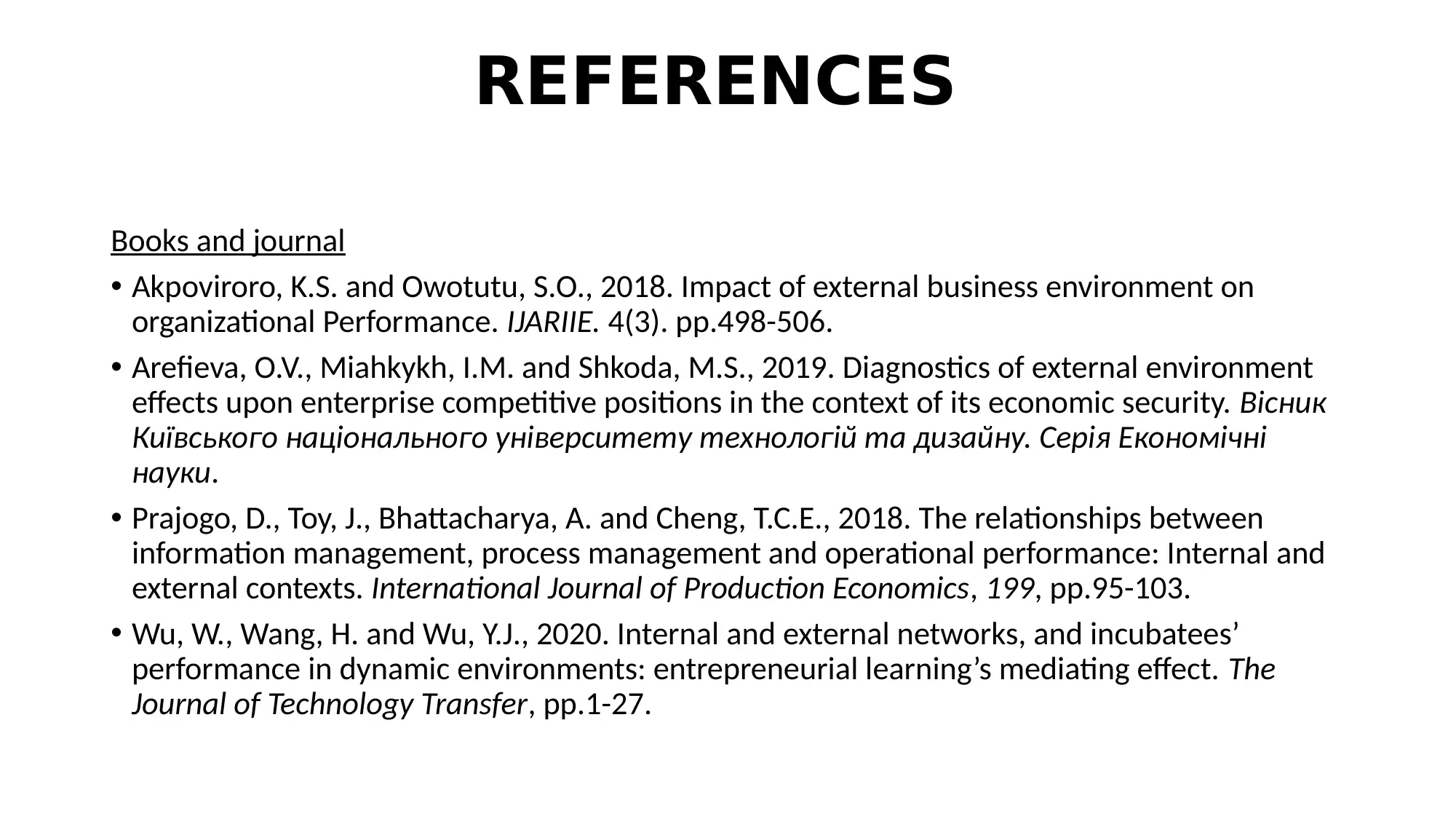
REFERENCES
Books and journal
• Akpoviroro, K.S. and Owotutu, S.O., 2018. Impact of external business environment on
organizational Performance. IJARIIE. 4(3). pp.498-506.
• Arefieva, O.V., Miahkykh, I.M. and Shkoda, M.S., 2019. Diagnostics of external environment
effects upon enterprise competitive positions in the context of its economic security. Вісник
Київського національного університету технологій та дизайну. Серія Економічні
науки.
• Prajogo, D., Toy, J., Bhattacharya, A. and Cheng, T.C.E., 2018. The relationships between
information management, process management and operational performance: Internal and
external contexts. International Journal of Production Economics, 199, pp.95-103.
• Wu, W., Wang, H. and Wu, Y.J., 2020. Internal and external networks, and incubatees’
performance in dynamic environments: entrepreneurial learning’s mediating effect. The
Journal of Technology Transfer, pp.1-27.
Books and journal
• Akpoviroro, K.S. and Owotutu, S.O., 2018. Impact of external business environment on
organizational Performance. IJARIIE. 4(3). pp.498-506.
• Arefieva, O.V., Miahkykh, I.M. and Shkoda, M.S., 2019. Diagnostics of external environment
effects upon enterprise competitive positions in the context of its economic security. Вісник
Київського національного університету технологій та дизайну. Серія Економічні
науки.
• Prajogo, D., Toy, J., Bhattacharya, A. and Cheng, T.C.E., 2018. The relationships between
information management, process management and operational performance: Internal and
external contexts. International Journal of Production Economics, 199, pp.95-103.
• Wu, W., Wang, H. and Wu, Y.J., 2020. Internal and external networks, and incubatees’
performance in dynamic environments: entrepreneurial learning’s mediating effect. The
Journal of Technology Transfer, pp.1-27.
1 out of 7
Related Documents
Your All-in-One AI-Powered Toolkit for Academic Success.
+13062052269
info@desklib.com
Available 24*7 on WhatsApp / Email
![[object Object]](/_next/static/media/star-bottom.7253800d.svg)
Unlock your academic potential
Copyright © 2020–2025 A2Z Services. All Rights Reserved. Developed and managed by ZUCOL.





